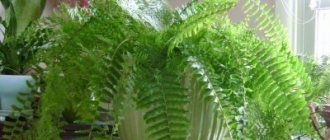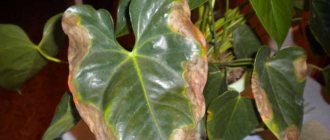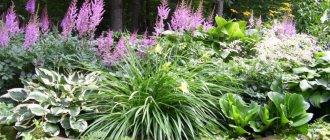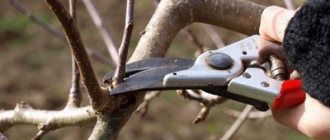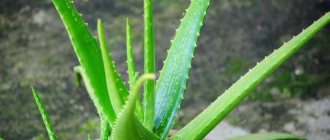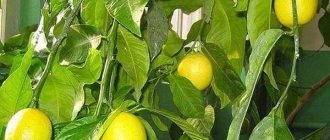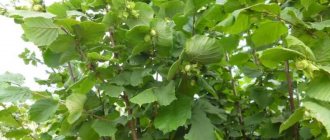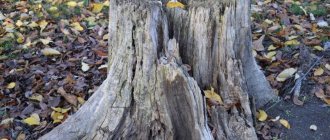The nature of the Earth is incredibly diverse, with many varieties of plants having herbaceous, tree, and shrub forms. We all know from our school botany course that our planet was once inhabited by giant tree ferns. The first such giant plants appeared more than 400 million years ago, during the Paleozoic era (Devonian period). But after 100 million years they began to die out and this process continues now.
Some species disappeared forever from the surface of the Earth, others survived the cataclysms that struck the Earth, were able to adapt to the changed conditions and survive, taking the form of herbaceous, liana-like plants. But some still amaze us with their size. Most ferns are moisture-loving, shade-tolerant crops. By the way, it was these plants that became the basis for coal deposits.
Description of fern-like plants
What is a fern, there are different versions. Scientists believe that these are direct descendants of the most ancient plants - rhinophytes. In the process of evolution, the structure of ferns has become more complex; why ferns are classified as higher plants does not surprise anyone. It confirms:
- cyclical development of plants;
- developed vascular system;
- adaptability to the terrestrial environment;
Fern in nature
By definition, a fern is a perennial plant that belongs to the genus of spore-bearing plants. To the question about a fern: is it a shrub or a herb, you can answer in the affirmative in both cases. Sometimes it is also a tree.
Additional Information. When describing ferns, one cannot help but recall their varied colors, which provide aesthetic pleasure. These plants often become a real decoration of areas. Their undoubted advantage is resistance to diseases and pests.
Important! As you know, ferns do not bloom, but in Slavic mythology, the fern flower became a symbol of eternal love and happiness. On the night of Ivan Kupala, lovers search in vain for a mythical flower.
How do they reproduce?
Most fern organs reproduce through vegetation.
To do this, you need to divide the plant's root system into several parts.
Reproduction can also occur with the help of lateral buds, shoots and spores.
To propagate ferns at home, select the type of propagation depending on the type of plant.
To reproduce by spores, you need to prepare special soil.
To do this, combine 1 kg of sand, 3 kg of garden soil and 3 kg of peat.
You can also use ready-made soil for growing violets.
The spores need to be collected in a paper bag and scattered on the surface of the soil, which must first be watered with water. Cover the container with glass and place it in a warm place that is well lit by sunlight.
Ferns are heat-loving crops and prefer to grow at temperatures from +20°C to +25°C. Caring for home crops is not difficult because they have a sexless life cycle.
To ensure that the leaf blades delight you with their beauty, regularly water the soil and monitor the air temperature. You also need to make sure that the plant receives plenty of sunlight.
Biological classification of ferns
Types of ferns - indoor and house plants
The sheer number of fern species makes their classification difficult. Such attempts were made by ancient scientists. The proposed schemes are often inconsistent with each other. The basis for the classification of modern ferns is the structure of the sporangium and some morphological characters. All varieties are divided into ancient and modern.
The division of ferns includes the following seven classes of vascular plants, both extinct and modern:
- Aneurophytopsida are the oldest primitive group.
- Archaeopteridopsida are also ancient representatives that resembled modern conifers.
- Cladoxylopsida - there are versions that this group represents a blind branch of evolution.
- Zygopteridopsida (Zygopteridopsida or Goenopteridopsida) are a transitional group to modern species.
- Ophioglossopsids or grasshoppers (Ophioglossopsida) are modern ferns.
- Marattiopsida are perennial plants of small and large forms.
- Polypodiopsida (Polypodiopsida - perennial or less often annual plants of different sizes). They are divided into three subclasses: Polypodiidae, Marsileidae, Salviniidae.
Leaf Features
The leaves, compared to the stem, are larger and much more massive. In some types of ferns, leaves can grow up to thirty meters in length. Most fern leaves have a petiole and a dissected pinnate plate, which has a shaft that is a kind of continuation of the petiole.
Young leaves growing from the rhizome have a curled appearance. The apical growth of fern leaves persists for a long time. This fact is quite interesting, since such growth is absolutely not typical for the leaves of higher plants.
In addition to performing the functions of providing the plant with important organic substances, the leaves of some types of ferns are sporulation organs.
History of fern plant species
The history of ferns began in the era of dinosaurs - 400 million years ago. In the favorable warm and humid climate of tropical forests, ferns dominated the Earth. Some species reached 30 m in height. Over time, climatic conditions have changed dramatically. How many natural disasters had to happen for such giants as dinosaurs and tree ferns to disappear.
Reproduction of ferns - diagram and description
With all the diversity of modern ferns, they are very different from the most ancient plants, inferior to them in size and variety of shapes. But even today this is the largest group of spores - 300 genera and more than 10 thousand species. Ferns have become widespread due to their ecological plasticity and amazing reproductive characteristics.
Important! Climatic conditions favorable for ferns today remain in the tropics and subtropics, where tree ferns reach 20 m.
POTTED FENS
Many decorative species of ferns belong to different classes, orders, and families. Ferns are very widespread; in fact, they grow all over the globe and are found in a wide variety of places. But the greatest diversity of these plants is observed in tropical rainforests. The most commonly grown potted ferns are:
- Adiantum capillus veneris;
- Asplenium bulbiferum;
- Nephrolepis exaltata;
- Golden polypodium (Polypodium aureum);
- Platycerium alcicorr
Prevalence in nature, examples of species
What fertilizer is needed for dracaena - choice
When and where ferns grow depends on the warmth and humidity of the area. The habitat of ubiquitous plants can be:
- lower and upper tiers of forests;
- swamps, rivers and lakes;
- ravines and damp meadows;
- rock crevices;
- walls of houses;
- roadsides.
Ostrich
In temperate latitudes you can find hundreds of herbaceous representatives of ferns. Brief overview of some types:
- Common bracken. Easily recognizable by its leaves in the shape of an open umbrella. Distributed in pine forests, suitable for consumption.
- Male shieldweed. A herbaceous plant with leaves up to 1.5 m in length, it is very rare. Shield extract is used in medicine as an anthelmintic.
- Female Kochedyzhnik. A large plant with gracefully shaped leaves.
- Common ostrich. Large beautiful fern. Due to long rhizomes it forms entire thickets. Used in landscaping areas. Boiled ostrich leaves are edible.
- Osmunda. A plant with a short rhizome and long shiny leaves native to East Asia and North America.
- Multi-row. Its leaves are dark green in color and arranged in rows.
Important! Bracken grows so quickly that its planting should be limited to various fences dug into the ground.
Suitable for home cultivation:
- Kostenets;
- Nephrolepis;
- Davallia;
- Asplenium;
- Dixonia;
- Pteris.
These plants wonderfully decorate your home interior. The Junior variety with corrugated leaves is very beautiful.
Home plant
Interesting Facts:
- Hecystortheris pumila and Azolla cariliniana are the shortest plants. Their length does not exceed 12 mm.
- Epiphytes thrive on trees and vines.
- In mountainous areas you can find Venus hair - an amazing plant with beautiful openwork leaves.
- The tree-like trunks of large ferns are used as building material in the tropics.
- Marsilea quadrifolia thrives underwater.
- Dicranopteris has leaf petioles of metallic strength.
Rare species of ferns:
- Crested shieldweed;
- Phegopteris binding;
- Brown's multi-row;
- Asplenia wall;
- The grove is multipartite.
- The Salvinia floating fern is listed in the Red Book of Belarus.
Important! Plants with beautiful leaves have decorative value and are often used in landscape design and in the preparation of floral compositions.
Adviсe
There are some general growing tips that have been learned by experienced gardeners. This will be discussed in more detail below.
On the farm
It is used as a raw material for pharmacology or the food industry.
You can plant ferns at home and use their leaves to make salads.
Also, such greens can be used as spices for main dishes. To do this, it needs to be dried.
If preparations are made from fern, they can be used to treat wounds, rheumatism and headaches.
Their growth is active, so they should be transplanted once a year. You need to constantly change the earthy lump.
Plants prefer to grow in moist soil that contains a lot of humus.
If you make your own soil for planting, mix 1 kg of leaf humus and 1 kg of sand.
Such soil will be well moistened and moisture will not stagnate in it. Ferns prefer to grow in soil with high levels of acidity.
Analysis of the structure of fern plants
The ancestors of fern plants had a primitive structure. In the process of evolution it has become more complex.
Stems
The stem of ferns is underdeveloped and small in size. It is called a rhizome. Of course, tropical ferns with woody stems are an exception. The climbing rhizome can spread over long distances.
Leaves, fronds
The fern leaf is much more massive than the stem. They are not quite ordinary, they have distinctive features of structure and growth, and various shapes. More often they are dissected and feathery. Fronds are the name given to the leaves of a fern. The leaf petiole is attached to the underground part of the stem - the root or rhizome. Looking at them, it is difficult to understand where the stem ends and at what level the leaf begins. An interesting feature of the frond is its growth at the top, which is a curled and gradually unfolding curl in the shape of a snail.
Vaii
Leaf development begins in the buds underground and lasts up to two years. Only in the third year can they appear above the ground. Due to apical growth, fronds of ferns reach very large sizes.
In most plants, fronds participate in the process of photosynthesis, vegetation, and at the same time in the formation of spores. Spores appear in sori, which are located on the underside of leaves in the form of single or group tubercles.
Root system
The root system consists of a powerful rhizome and numerous adventitious roots. Conductive tissue on the stem and roots absorbs water and moves it through vascular bundles to the leaves.
Reproductive organs
The life of a fern is divided into two cycles: a long asexual cycle - sporophyte and a short sexual cycle - gametophyte. The reproductive organs of ferns, sporangia, where spores are located, are located on the lower part of the leaves. Ripe spores spill out from the bursting sporangium and are carried by the wind far from the mother plant. Some scientists compare sporulation with the flowering of other plants.
Of the huge number of spores, only a part survives. The sexual phase begins when the spore germinates under favorable conditions into a haploid germ (gametophyte), which looks like a green heart-shaped plate several mm in size. On the underside of the prothallus, female and male genital organs - antheridia and archegonia - are formed. The eggs and sperm formed in them fuse in wet weather, and a zygote is formed, from which the embryo of a young plant develops - a sporophyte.
The plant can also reproduce vegetatively, when brood buds form on the stems and roots. This is important for amateur gardeners who grow certain species on their plots.
Important! It has been noticed that beautiful rare species reproduce only by spores.
Vaii
Ferns lack true leaves. Evolutionary transformations endowed them with prototypes of leaves, looking like a system of branches laid in one plane. Botanists call this phenomenon a flat branch, frond or pre-shoot. The appearance of the fern leaf is made up of complex dissected fronds, which are smooth or pubescent, thin or leathery, light or dark green.
The preshoots, which develop from snail-shaped primordia, are similar to the leaf blades of modern flowering plants. Lacey pinnately complex plane flies are planted on strong petioles - rachis, similar to twigs. The appearance of a fern leaf on the reverse side in mature individuals is a collection of brown dots, sporangia - containers for spores.
Comparison with other herbaceous plants
Pteridophytes are ferns, horsetails and mosses. They all reproduce by spores and have a common origin.
Ferns have characteristic distinguishing features from other herbaceous plants:
- They differ from algae in their rhizomes and complex leaves.
- In mosses and ferns, alternating generations of gametophyte and sporophyte occur. In mosses the gametophyte predominates, in ferns the sporophyte predominates. The presence of conducting tissue in the form of vascular bundles makes representatives of fern-like plants more adapted to a terrestrial lifestyle.
- Unlike flowering plants, they reproduce by spores and do not bloom.
Due to its rich chemical composition, fern has beneficial properties for people. Used for medicinal purposes and in cooking, suitable for pickling. Traditional medicine also did not ignore wonderful plants.
Reproduction
There are types of ferns whose leaves can be completely different. On the same plant there are sterile leaves that do not have sporangia and leaves that have these sporangia. Such leaves are called fertile, translated from Latin as fertilizing.
The spores of most species are located in the lower part of the reverse surface of the leaf. Like most higher plants, the process of reproduction in ferns occurs when the spores mature. Special formations where spores develop are called sporangia. Large clusters of spores located close to each other form sori. They look like "bags" where spores are stored.
After the spores have matured, they fall out, are blown by the wind and find themselves in conditions that are comfortable for growth. Soon, a small green plate with a diameter of only a few millimeters is formed from the sprouted spore, which is the outgrowth of the fern.
Poisonous representatives
But you should be careful, because some types of ferns are poisonous. Plants of the shield family are the most dangerous, since their rhizomes contain toxic derivatives of phloroglucinol. However, shieldweed has medicinal properties and is used to treat helminthiasis.
As we can see, they have a large number of useful properties, so ferns need to be protected. When visiting forests and parks, there is no need to pick off growing ferns to decorate bouquets, because the leaves of these ancient plants, if damaged, quickly collapse and lose their appearance.
The plant becomes unattractive, wilted, drooping and simply thrown away. Due to such actions, the number of these ancient plants, which have a lot of useful properties, is decreasing. The unique features of fern-like plants require that we treat them with special sensitivity.
Economic use
The fern-like department is widely used in the economy. So, residents of some countries use young shoots and the core of tree-shaped ferns for food. These parts are pickled and salted. For example, the common bracken is edible because it has a high protein and starch content in its leaves.
Many species of ferns are used as ingredients to create medicines against intestinal parasites. The root of the plant has a cleansing effect and is used to remove waste and toxins, and also treats ulcers, eczema, headaches, and wounds. The roots can contribute to the complete restoration of optimal functioning of the cardiovascular system.
